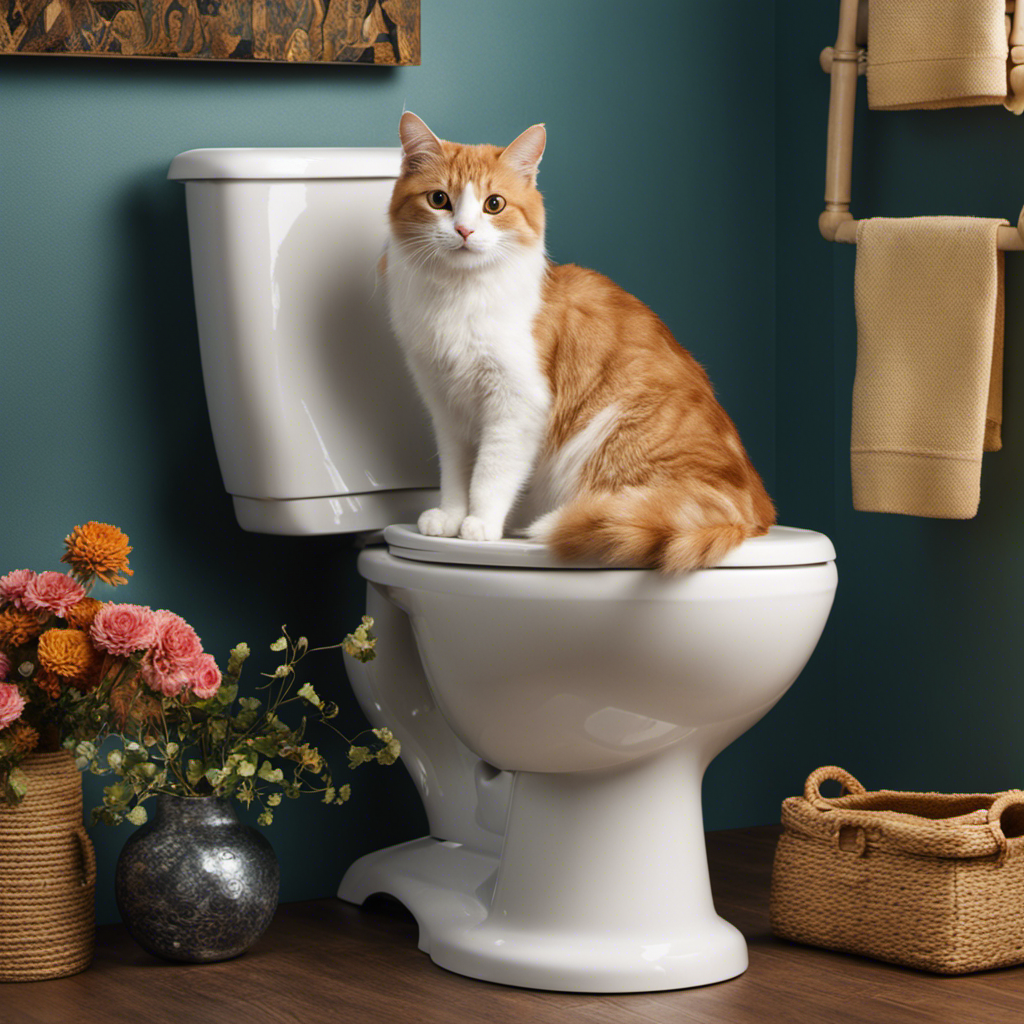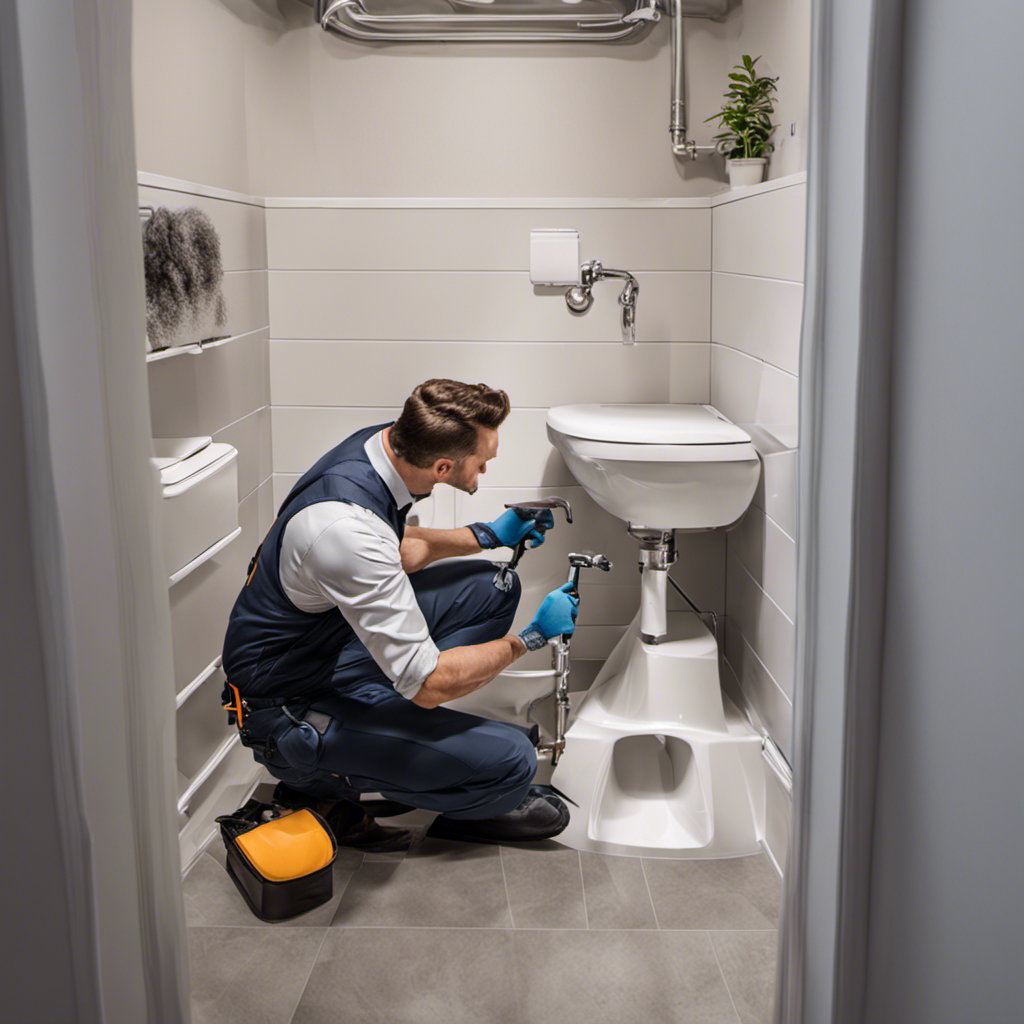Hey there, folks! Ever found yourself wondering if your toilet is clogged or not? Well, guess what? I’ve got all the answers you need right here.
In this article, I’m going to guide you through the telltale signs of a clogged toilet. Trust me, with my expert advice and step-by-step instructions, you’ll be able to recognize a blocked toilet like a pro.
So, let’s dive right in and get your toilet back to its flushing glory, shall we?
Key Takeaways
- Water rising or not draining properly is a clear sign of a clogged toilet.
- Avoid flushing large amounts of toilet paper, feminine hygiene products, or excessive waste to prevent toilet clogs.
- Regular maintenance, such as cleaning the toilet bowl and practicing proper waste disposal, is essential to prevent clogs.
- Use a plunger for minor clogs and a toilet auger for deeper blockages.
Signs of a Clogged Toilet
If you notice water rising or not draining properly, it’s a sign that the toilet is clogged. Toilet clog prevention is essential to avoid this inconvenience.
One effective method is to be mindful of what you flush down the toilet. Avoid flushing large amounts of toilet paper, feminine hygiene products, or excessive amounts of waste at once.
Additionally, regular maintenance is key. Use a plunger to unclog minor blockages. Place the plunger over the drain hole and pump vigorously to create suction, forcing the clog to dislodge.
For more stubborn clogs, try using a toilet auger. Insert the auger into the drain hole and turn the handle to break up the obstruction.
These DIY toilet unclogging methods can save you time and money by preventing the need for professional assistance.
Common Indicators of Toilet Blockage
Some common indicators that a toilet is blocked include difficulty flushing and water rising to the brim.
When faced with these toilet plumbing issues, it is essential to address them promptly to avoid further damage.
Unclogging techniques can vary depending on the severity of the blockage.
For minor clogs, a plunger can be used to create pressure and dislodge the obstruction.
If the plunger fails to resolve the issue, a toilet auger can be employed to reach deeper into the plumbing system and break up the blockage.
In more severe cases, professional help may be required to assess and fix the problem.
It is important to remember that prevention is key in avoiding toilet blockages.
Regular maintenance, proper waste disposal, and avoiding flushing non-flushable items can help maintain a clear and functional toilet.
How to Recognize a Clogged Toilet
The main signs of a blocked toilet include difficulty flushing and water rising to the brim. If you’re experiencing these issues, it’s important to recognize them early on to prevent further damage. Here are some key indicators to look out for:
-
Slow or weak flush: If you notice that your toilet is not flushing as effectively as it used to, it could be a sign of a clog. This is usually caused by a blockage in the pipes or the trapway.
-
Water rising to the brim: When flushing, if the water level starts to rise instead of going down, it indicates a blocked toilet. This happens because the clog is preventing the water from flowing through the pipes properly.
-
Gurgling sounds: If you hear unusual noises, like gurgling or bubbling, coming from the toilet or other plumbing fixtures, it could be a result of a clog obstructing the flow of water.
Clear Indications of a Blocked Toilet
When you notice slow or weak flushes, water rising to the brim, or gurgling sounds, it’s clear that your toilet is blocked and needs attention. As a homeowner, it’s important to understand the clear indications of a blocked toilet in order to prevent further damage and costly repairs. To help you better recognize these signs, I have created the following table:
| Indication | Description |
|---|---|
| Slow or weak flushes | When you flush the toilet and the water drains slowly or doesn’t flush fully |
| Water rising to the brim | The water level in the bowl rises close to the rim, but doesn’t overflow |
| Gurgling sounds | Bubbling or gurgling noises coming from the toilet when you flush |
By being aware of these indications, you can take immediate action to resolve the clog before it worsens. In the next section, we will discuss how to identify the specific cause of the toilet clog.
Transitioning into the subsequent section about ‘identifying a toilet clog’, understanding the causes of a clogged toilet is essential for effective troubleshooting and choosing the right unclogging method.
Identifying a Toilet Clog
Transitioning into the subsequent section about ‘identifying a toilet clog’, it’s important to understand the common causes and choose the right unclogging method. When it comes to troubleshooting clogged toilets, prevention is key. Here are a few tips to help you avoid future toilet clogs:
- Avoid flushing excessive amounts of toilet paper at once.
- Do not flush objects that are not meant to be flushed, such as wipes or feminine hygiene products.
- Regularly clean the toilet bowl to prevent buildup and blockages.
Now, let’s discuss how to identify a toilet clog. The first sign is water rising to the rim when you flush. This indicates a partial blockage. Another indication is when the water level remains high and drains slowly after flushing. Lastly, if water is overflowing onto the floor, you have a severe clog that needs immediate attention. By recognizing these signs, you can take the necessary steps to fix your clogged toilet.
Conclusion
Well, there you have it, folks! We’ve covered all the telltale signs of a clogged toilet.
From the common indicators to the clear indications, we’ve left no stone unturned.
By now, you’re practically an expert in identifying a toilet clog.
Remember, the key is to trust your instincts and pay attention to the subtlest of clues.
Now go forth and conquer those clogs like a true toilet detective!
You’ve got this!










